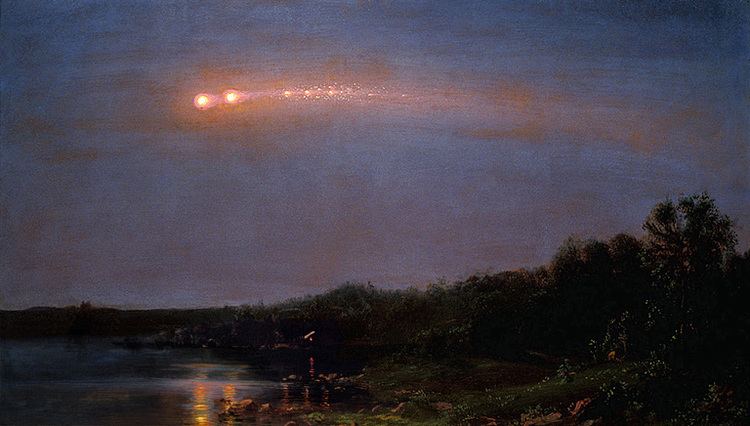 | ||
An Earth-grazing fireball (or Earth-grazer) is a fireball, a very bright meteor that enters Earth’s atmosphere and leaves again. Some fragments may impact Earth as meteorites, if the meteor starts to break up or explodes in mid-air. These phenomena are then called Earth-grazing meteor processions and bolides. Famous examples of Earth-grazers are the 1972 Great Daylight Fireball and the Meteor Procession of July 20, 1860.
Contents
Overview
As an Earth-grazer passes through the atmosphere its mass and velocity are changed, so that its orbit, as it re-enters space, will be different from its orbit as it encountered Earth's atmosphere.
There is no agreed-upon end to the upper atmosphere, but rather incrementally thinner air from the stratosphere (~50 km), mesosphere (~85 km), and thermosphere (~690 km) up to the exosphere (~10,000) (see also thermopause). For example, a meteoroid can become a meteor at an altitude of 85–120 km above the Earth.
Known Earth-grazing fireballs
An Earth-grazing fireball is a rarely measured kind of fireball caused by a meteoroid that collides with the Earth but survives the collision by passing through, and exiting, the atmosphere. As of 2008 four grazers have been scientifically observed.
